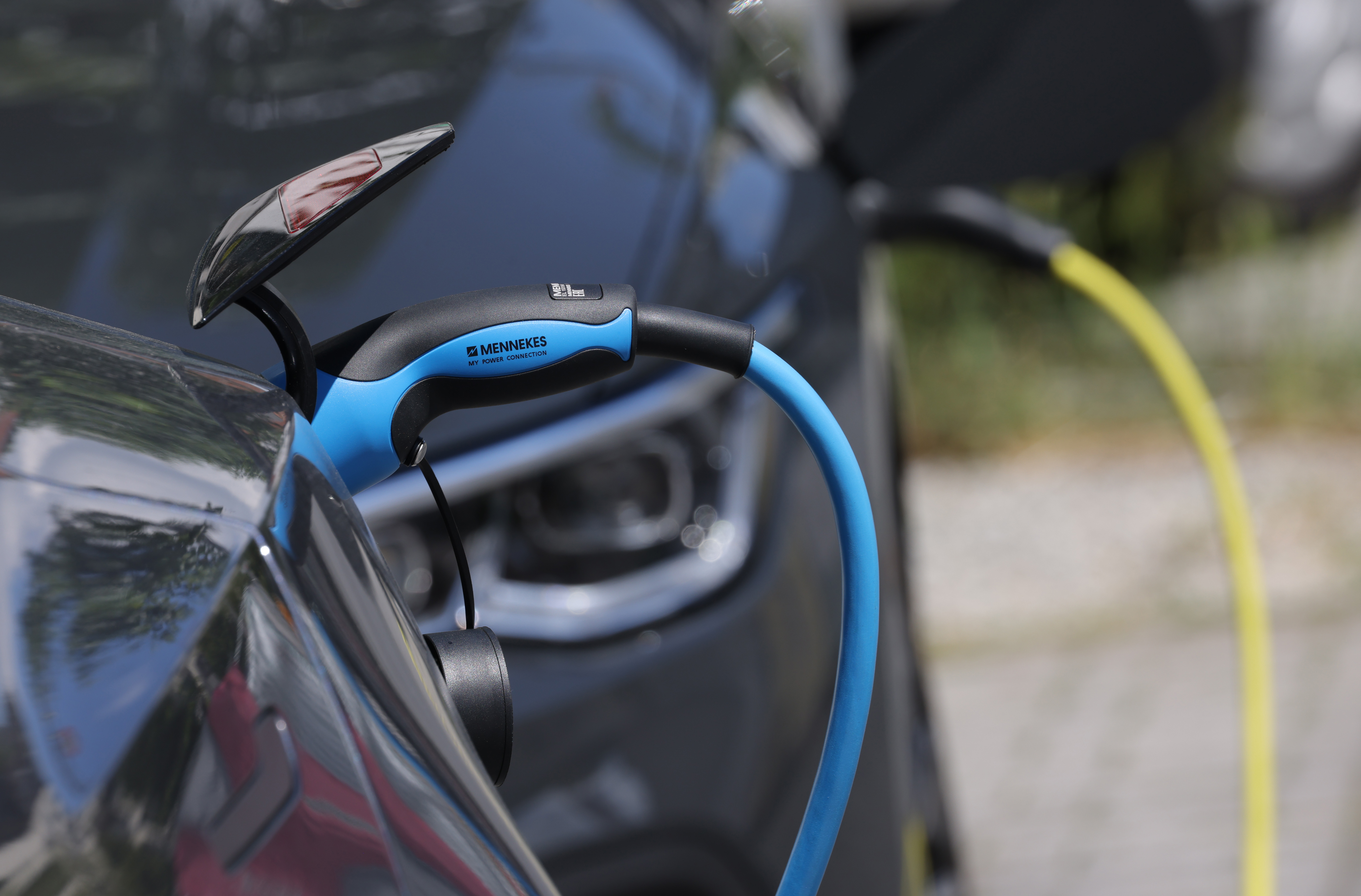The nerd's guide to Biden’s newest electric vehicle push
Here is POLITICO's breakdown of the 1,475 pages of proposed Environmental Protection Agency regulations that could transform the way Americans get around.


The Biden administration’s newest push to get more Americans behind the wheel in electric vehicles rests on two granular pollution regulations that could transform the auto industry.
Here’s what to know about the 1,475 pages of proposed rules that the Environmental Protection Agency unveiled Wednesday — requirements that agency chief Michael Regan said are meant to spur “innovation and creativity” from carmakers:
How big a deal is this really?
Potentially very big.
If Wednesday’s proposals work out the way Biden’s regulators envision, two out of every three new cars and light trucks sold in the U.S. in 2032 will be electric — more than 10 times the current national sales rate.
That figure includes a projection that 78 percent of sedans, 68 percent of pickups and 62 percent of crossovers and SUVs could be battery-powered just nine years from now.
Electric vehicle sales are rising already, of course. Some automakers, such as Ford and General Motors, have announced plans to stop making gasoline-powered cars entirely by 2035.
But without stricter regulations, the EPA says, electric vehicles would make up only 39 percent of new sales in 2032.
The agency also projects that half of new “vocational” vehicles — such as garbage trucks and school buses — will be electric that year under its proposals, as well as 25 percent of long-haul freight tractor trailers.
Aren’t electric vehicles more expensive than gasoline-powered ones?
Yes. And EPA estimated that its proposal would add an incremental cost of $844 for cars and $1,385 for trucks in 2032.
But it also contends that those upfront costs will be more than offset by consumers’ savings on fuel and maintenance (electric cars don’t need oil changes, for example), as well as purchasing incentives. The agency says the average buyer of a car or light-duty truck will save $12,000 over the vehicle’s lifetime.
That’s on top of the rule's projected benefits in reduced oil imports, reductions in diseases related to air pollution and a lessening of planet-warming greenhouse gases.
How would the EPA’s rule work?
The first and most sweeping rule, Reg. 2060-AV49, covers light-duty cars and trucks as well as medium-duty vehicles, a class that includes larger SUVs and passenger vans.
It seeks to prod automakers to produce more electric vehicles by slashing the amount of greenhouse gases allowed to come out of tailpipes.
For light-duty vehicles, the new target would be an average of 82 grams of carbon dioxide per mile traveled in 2032. That’s down roughly half from the administration’s existing target for 2026.
The target is a “fleet average” that the EPA calculates for each auto manufacturer. That means that an automaker’s sales of zero-carbon electric vehicles can offset the pollution from its fossil-fuel cars and trucks, though automakers may pursue more efficiencies in gasoline-powered models as well.
The final real-world figures can also vary depending on how automakers choose to comply with the rule.
The rule also strengthens limits on vehicles’ conventional air pollutants — a step that would also increase the incentives for carmakers to go electric.
For acid-rain-causing nitrogen oxides and other organic gases, the standard would be reduced to 12 milligrams per mile in 2032, down 60 percent from an Obama-era requirement. EPA also proposed a standard for “particulate matter” (i.e., soot) that’s down as much as 92 percent from current standards.
In addition to the primary proposal, Alejandra Nunez, EPA's deputy assistant administrator for mobile sources, said the agency is soliciting comments on several alternative regulatory options of varying stringency for light-duty vehicles. The least stringent would achieve 64 percent electric vehicle penetration in 2032, Nunez said, while the most would reach 69 percent.
Is that all?
No! The proposal also includes several tweaks to a compliance program that EPA has been using to help automakers meet its requirements.
The agency is maintaining a system in which companies that produce less-polluting vehicles can earn “credits” that they can then sell to their more-polluting rivals. (These credits have been a revenue source for companies like Toyota and Tesla.)
On the other hand, EPA wants to phase out a bonus credits program that rewarded companies for adopting technologies such as solar roof panels and high-efficiency headlights.
EPA also wants to stop giving credits to electric vehicle manufacturers for using more efficient air conditioning.
EPA’s second proposed rule, Reg. 2060-AV50, would cover heavy-duty vehicles such as tractor-trailers and vocational vehicles — the source of a quarter of the transportation sector's greenhouse gas emissions. The rule follows two prior rounds of greenhouse gas regulations for heavy-duty trucks that manufacturers largely accepted.
That proposal also creates warranty requirements for batteries on zero-emissions trucks and would require automakers to install "state of health" battery monitors accessible to customers.
The light-duty proposal will be open for 60 days of public comment and the heavy-duty proposal for 50 days of comment once published in the Federal Register in the coming weeks.
But wait — didn’t Biden just make it harder to get tax breaks for electric vehicles?
Yes, less than two weeks ago: Under a Treasury Department proposal announced March 31, fewer of the electric cars and trucks now on the market will qualify for the $7,500-per-vehicle tax breaks intended to make EVs more affordable for consumers.
The aim, as mandated by Congress, is to ensure that vehicles receiving the credits are made in the U.S., and that their critical parts and minerals come from either the United States or its closest trading partners. Even tighter restrictions from Treasury — aimed at boxing out countries like China — are due later this year.
So which vehicles will qualify for the tax credits?
Stay tuned: By Tuesday, automakers are supposed to confirm which of their models meet the new Treasury requirements. (They’ll have to swear this under penalty of perjury.)
But when POLITICO questioned the car companies last week, they said just five of the 91 electric car models now sold in the U.S. clearly qualified for the full tax break. Those all came from American automakers, with General Motors, Ford and Tesla leading the pack.
What other obstacles could complicate Biden’s goals?
The U.S. still doesn’t have nearly enough chargers for all the electric vehicles that the EPA wants to see on the highways. And many of the chargers that exist suffer from malfunctions, slow charging and other woes, as David Ferris recently documented for POLITICO’s E&E News.
Questions linger about whether the U.S. electric grid can stand up to the load of charging so many vehicles, and whether domestic manufacturing and mining can ramp up fast enough to make sure EVs are produced domestically.
The administration's hope is that the prodding from the EPA, the availability of tax breaks and other incentives for technologies such as charging stations will speed up a transformation to electric vehicles that market forces are already pushing to bring about. That's a work in progress, of course.
What do people say about the rule?
Many environmental groups welcomed Wednesday’s news. Dan Lashof, U.S. director for the World Resources Institute, said in a statement that EPA's proposals will "speed the United States' auto industry toward an all-electric future faster than any regulation has before."
But Dan Becker, director of the Center for Biological Diversity's Safe Climate Transport Campaign, argued that the proposal isn't stringent enough. He called on the EPA to write a regulation that achieves 67 percent electric vehicle sales in 2030 — two years earlier than the agency's timeline.
"Biden shouldn’t let automakers’ can’t-do attitude sabotage his best shot at cutting carbon emissions," Becker said in a statement.
Republicans were, notably, less thrilled. Sen. John Barrasso (R-Wyo.) accused Biden of trying “to ban the cars we drive,” a common refrain from GOP critics of the new rule.
“The ‘electrification of everything’ is not a solution,” Barrasso said Wednesday. “It’s a road to higher prices and fewer choices.”
Find more stories on the environment and climate change on TROIB/Planet Health












